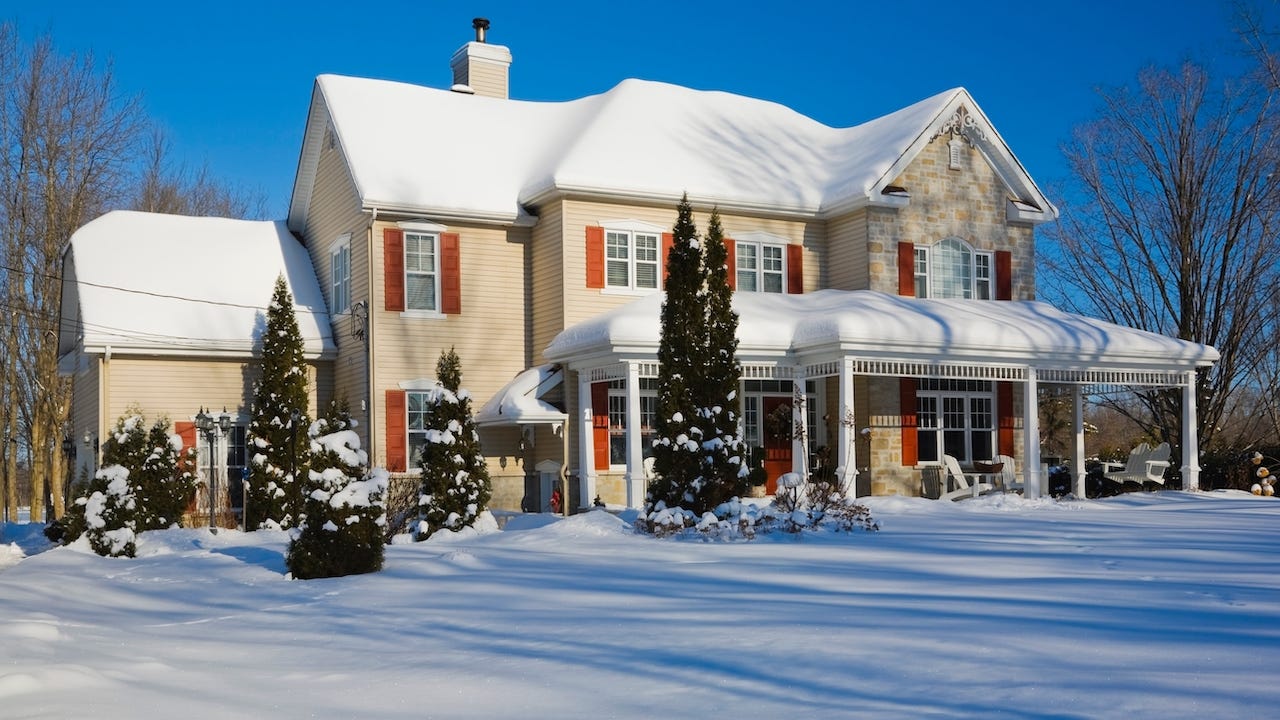Mortgage rate forecast for March 2022: Upward pressure continues

The Bankrate promise
At Bankrate we strive to help you make smarter financial decisions. While we adhere to strict , this post may contain references to products from our partners. Here's an explanation for .
Most signs point to higher mortgage rates in the coming days and weeks. The markets are volatile because of many factors, including geopolitical conflict and continued inflationary concerns.
Meanwhile, home prices aren’t getting any cheaper. So if you’re debating whether to lock in a rate now or later, your window of time may be dwindling to capitalize on current rates before they head up.
Read on for key rate prognostications from trusted industry experts.
March brings uncertainty
Ask the pros and most will agree: Mortgage rates should tick up in March.
“I anticipate the 30-year fixed mortgage rate to hover around 3.9 percent next month, with the 15-year fixed rate between 2.9 percent and 3.0 percent,” says Nadia Evangelou, director of forecasting for the National Association of Realtors. “Rapidly rising inflation and expectations that the Fed will raise short-term interest rates as soon as this month will continue to push up mortgage rates. March is also the month when the Fed’s asset purchase program is set to end. That means the current economic stimulus policies will conclude very soon.”
Greg McBride, Bankrate’s chief financial analyst, foresees even costlier rates.
“With inflation figures continuing to surprise to the upside, mortgage rates will remain above 4.0 percent on the 30-year fixed and above 3.25 percent on the 15-year fixed mortgage in March. The wildcard is the extent to which news like Russia’s invasion of Ukraine takes center stage, as the impact on mortgage rates could go either way,” he says.
The world is intently focused on Eastern Europe and images of bombs, tanks and troops. Sanctions against Russia could shape the direction rates head in the forthcoming weeks.
“Tensions between Russia and Ukraine might affect global markets. This could cause mortgage rates to fall, as more investors would move from stocks into the safety of bonds,” adds Evangelou. “However, the Fed will likely raise short-term interest rates as soon as this month, thereby moving up mortgage rates.”
An even bigger catalyst on rates than the Ukrainian conflict may be the lingering specter of inflation.
“In recent months, inflation has run a bit hotter than most expected. If inflation surprises on the upside, interest rates will likely be higher than forecasted,” says Len Kiefer, deputy chief economist for Freddie Mac. “On the other hand, adverse economic effects have the potential to put significant downward pressure on mortgage rates. We also have to see how lenders respond to rising interest rates – to maintain business, some lenders may opt to compress margins. That would mean primary mortgage market rates may not fall as much as secondary rates or Treasury yields.”
Looking at mortgage rates beyond March
Don’t count on rates will improve after spring has sprung and we head into the second half of 2022, unfortunately.
Cases in point: Fannie Mae now expects the benchmark 30-year fixed-rate mortgage to average 3.5 percent and 3.6 percent, respectively, in the first quarter and through the rest of 2022. That compares to 3.3 percent and 4 percent, respectively, as predicted by the Mortgage Bankers Association. Meanwhile, in its latest forecast, Freddie Mac envisioned a 3.6 percent average 30-year fixed rate for the year.
“While higher short-term interest rates will push up mortgage rates, I expect some of this impact to be mitigated eventually through lower inflation,” Evangelou says. “Thus, I expect the 30-year fixed mortgage rate to continue to rise, although we aren’t likely to see the big jumps that occurred over the past few weeks.”
Kiefer concurs.
“Mortgage rates are likely to continue to move higher throughout the balance of 2022, although the pace of rate increases is likely to moderate,” he notes. “Much of the increase in rates in early 2022 is in anticipation of what will happen later this year, especially with Federal Reserve interest rate policy.”
Rates could settle down if the Fed takes aggressive action against inflation over the next several months by raising interest rates repeatedly and providing specifics about balance sheet runoff, McBride believes.
“But if inflation continues to accelerate and the Fed remains behind the inflation curve, then 30-year fixed rates could hit 4.5 percent or higher in relatively short order,” McBride says. “How the Fed addresses inflation and whether the supply chain shows any lasting improvement will dictate whether or not inflation begins to recede, as is widely expected this year. Wildcards such as geopolitical issues or another coronavirus variant could shift things, too, but only for a limited time.”
Seize the moment if you can swing it
The takeaways here are clear: Provided your financial house is in order and your job stability is relatively certain, there’s no time like the present to lock in a mortgage before rates creep higher and reduce your purchasing power.
“There is little sense in holding out waiting for lower rates when all the risk is tilted toward higher rates,” McBride says. “But do not rush into a home purchase just in the pursuit of a low rate if you are not adequately prepared or financially able to handle the responsibilities.”
Count Kiefer among the believers of that credo.
“With rates rising and expected to rise through 2023, it makes sense to obtain a purchase or refinance mortgage if you are in good standing,” he says.
Also, consider on the fact that current mortgage rates are still not far off from historical lows.
“Even with the recent increase in mortgage rates, purchasing a home remains a great investment. In addition to the other benefits of homeownership, the equity that you can build in 2022 due to price appreciation will probably be higher than your mortgage payment,” Evangelou says. “If you purchase a home today with a value of $350,000, the principal and interest on your mortgage payment should be around $1,485 every month. Nevertheless, assuming home prices will rise by 6 percent in 2022 as expected, you can accumulate about $1,750, on average, every month in equity due to price appreciation.”
Just be careful not to stretch your finances too far or bite off more than you can chew financially.
“There is more risk lately with prices as elevated as they are. When in doubt, remember that the novelty of that new home will wear off but the mortgage payments will not,” cautions McBride. Lastly, especially with rates on the rise, remember that it’s vitally important to shop around among different lenders and different mortgage products.
“Doing so may save you thousands of dollars if you can find a lender that offers a lower rate and more competitive fees,” McBride adds.
Learn more:
Related Articles

Mortgage rate forecast for June 2022: Recession worries may keep rates in check


Is the sudden decline in mortgage rates just a pause on the way up?

Mortgage rate forecast for January 2022: Higher rates ring in the New Year